Boost Demand Generation Now With AI
This guide equips you with everything to use the power of AI for B2B demand generation. We’ll explore industry best practices and actual use cases so you can utilize AI to its fullest potential. Discover jam packed practical resources, including smart prompts and leading AI-enabled tools capable of sifting through tons of data to find that warm lead and personalize any content, from attention grabbing ad copy to emails and more
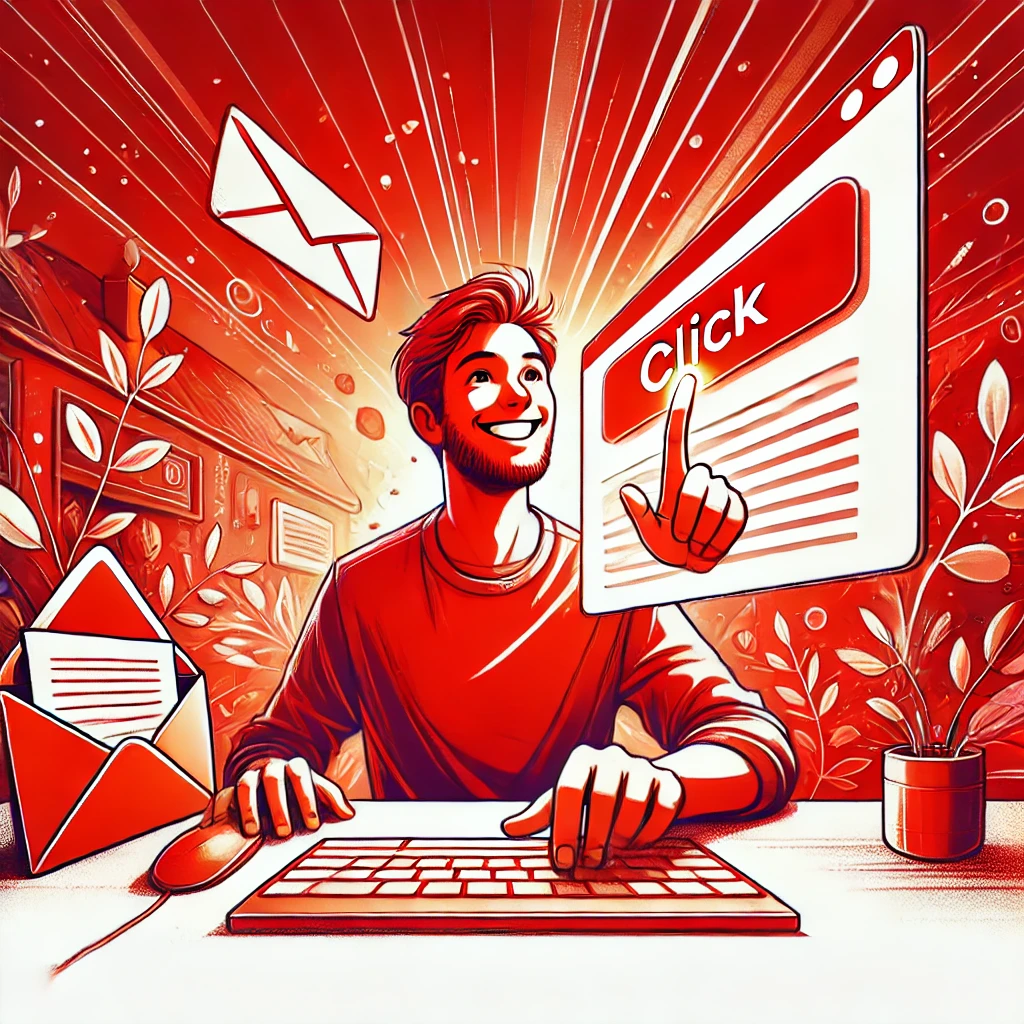
Table of Contents:
Navigating the Maze of Demand Gen
B2B lead generation can feel frustratingly chaotic – we are data rich, but struggle to find real opportunities. Crafting messages that resonate, going on a hunt to reach decision makers, and personalizing outreach at scale all feel like trying to juggle chainsaws (eeeh). But lucky, here are a few areas AI is starting to move the needle.
- Data Insights: Stop drinking from the firehose of data whether it’s analyzing website visits, reviewing ad performance or attributing content clicks. There is a ton of data, but finding the useful bits is the trick. AI can easily sift through the mountain of data to sort the real prospects from the window shoppers.
- Crafting Messages That Stick: You write killer copy and content, but then hear crickets. The B2B world is noisy, and your message can easily be lost in the digital abyss. AI can help personalize content and target the right audience, ensuring your message gets heard.
- Finding Who Calls the Shot Figuring out the real decision maker is crucial but at times is a wild goose chase. More so, reaching the right audience is key, but with ever changing buyer profiles and a choppy online landscape, hitting the target is a challenge. AI can help identify ideal customer profiles and target outreach with laser like focus.
- Qualification: Not all leads are equal. Distinguishing between a serious prospect and someone just curious is a guessing game. AI can analyze data to identify hot leads, saving you from wasting time on unqualified prospects.
- Measurement: Is your demand generation working? Are you attracting the right leads? Are they converting into customers? The answer is often a frustrating “maybe.” The key is finding the metrics that really tell you how you’re doing. AI can track and analyze data, providing clear insights into exactly what’s working and what’s not.
- Balancing Personalization and Scale It’s the tightrope walk of making something feel custom-made without spending a fortune. Buyers crave personalization, but crafting individual outreach for every lead will break the bank. The result? Generic messages that fall flat. AI can analyze data and personalize communication for each lead, making them feel valued and increasing engagement.
- Building Trust and Engagement: Keeping leads engaged can be a delicate dance. In a world full of noise, earning trust is like striking gold and our job is to not only gain that trust but keep it shining. AI can automate intelligent communication and keep leads engaged throughout the nurturing process.
While these challenges are significant, they are not insurmountable. By acknowledging these hurdles and exploring new AI solutions, B2B marketers can navigate the complexities of the digital landscape and achieve content marketing success.
Examples: How to Use AI for Demand Generation to Escape the B2B Lead Limbo
For all these challenges AI offers unique ways to scale and improve demand generation and qualification. Leveraging data, automating processes, and enhancing customer experiences. Let’s explore how AI tackles these challenges and the benefits it brings, along with examples and relevant tools:
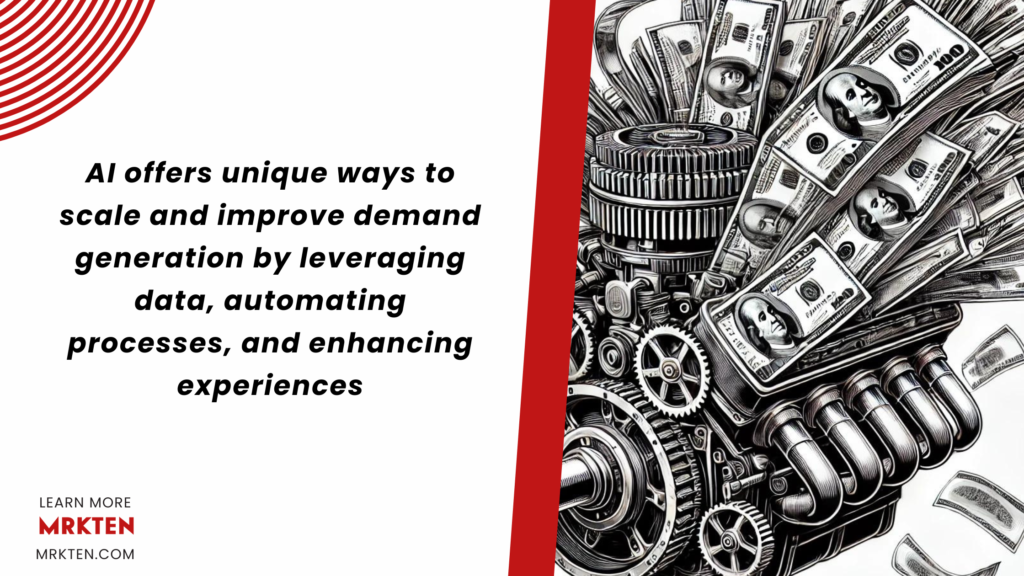
- Using Data AI-enabled predictive analytics can sift through massive datasets to identify valuable insights and trends making data more manageable and actionable for marketing. For example, AI can identify leads with high conversion potential from massive amounts of intent data. Tools like Breadcrumbs build custom lead-scoring models that use real-time intent signals and machine learning to adapt lead-scoring and market dynamics, offering proactive decision-making capabilities.
- Resonant Messages: AI can analyze customer data and behavior, enabling the delivery of tailored personal messages that resonate with the target audience. For example, Braze uses AI to personalize website content and display targeted ads based on user behavior.
- Targeting: AI can analyze demographics, interests, and online behavior to pinpoint your ideal customer profile. For example, tools like Terminus and Bombora utilize AI to identify companies actively researching your product category, allowing for laser-focused targeting.
- Qualification: AI tools integrate external data, and analyze lead behavior and interactions to prioritize leads most likely to convert. Providing a deeper understanding of leads to optimize and tailor marketing strategies. Tools like Meet Alfred and Overloop are examples of AI tools that automate lead generation and qualification, saving time and resources.
- Precise Measurement: AI can be your dashboard, providing more precise measurement and real-time insights into campaign performance, enabling you to focus on metrics that matter and adjust strategies dynamically to improve outcomes. AI tools like Madgic track user interactions across multiple touchpoints, revealing the true drivers of conversion and allowing for campaign optimization.
- Personalization: AI enables hyper-personalization at scale by analyzing vast amounts of data to create detailed buyer personas and tailor marketing efforts accordingly, without sacrificing efficiency. This approach allows for the delivery of custom-made experiences to a large audience. For example, AI tools like Chorus and Gong.io analyze communication data and suggest personalized talking points for sales outreach.
- Build Trust and Drive Engagement: AI can build and maintain trust by ensuring consistent, accurate, and timely information is provided to customers. By leveraging AI for data integrity and personalized experiences, companies can establish credibility and foster long-term relationships. For example, new features in platforms like Drift and Intercom leverage AI to automate chatbots and send personalized messages based on user behavior, fostering ongoing engagement with leads.
In summary, AI not only addresses the complex challenges of B2B demand generation and qualification but also opens new avenues for innovation and growth. By leveraging AI-powered tools, you can enhance your marketing strategies, identify high-value leads, personalize communication, and drive revenue growth more efficiently.
How to Use ChatGPT or Google Gemini to Accelerate Demand Generation
Effective prompts can optimize every step of demand gen. Prompts can play a pivotal role in developing effective lead-generation strategies, optimizing channels and content, segmenting audiences, qualifying leads to doing predictive analysis. Here are a few to try:
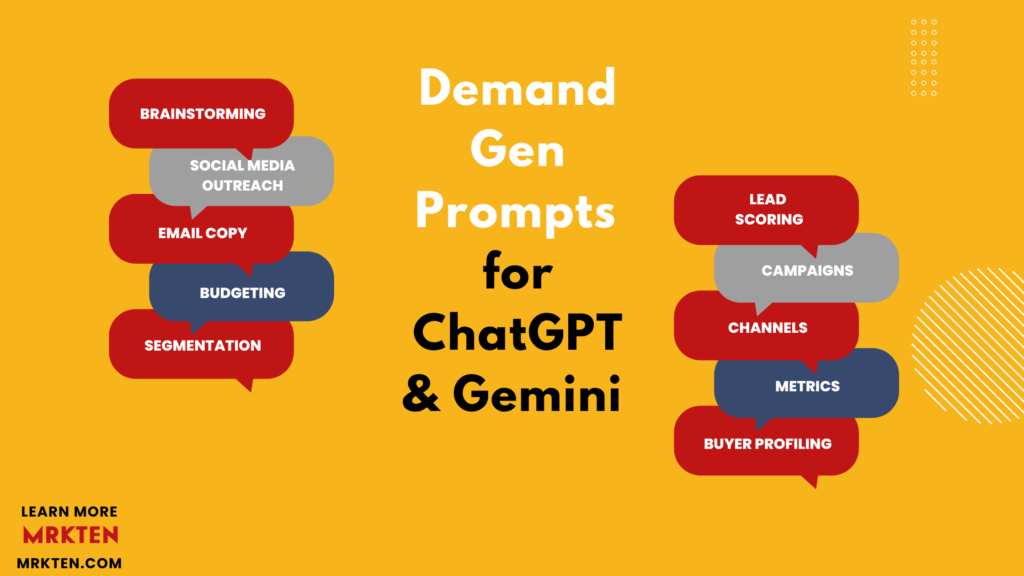
Brainstorm Strategies
“What are the most effective lead generation strategies to target [target audience description] who are struggling with [pain point] and get them to [desired action]?”
Social Media Outreach
“Imagine you’re a [ideal customer persona title] facing these challenges [challenges]. How can you leverage social media to generate qualified leads and build long-term relationships with tis target audience? (As a social media marketing expert) Craft 10 ways to attract [ideal customer persona] and nurture leads on [social platform]. What additional social media strategies would you recommend to maximize lead generation for this scenario?”
Email Copy
“Craft an email campaign to target [ideal customer persona]. They are struggling with [specific pain point related to your product/service]. What are some compelling email subject lines and campaign ideas that would resonate with them? How can these email campaigns showcase the benefits of your [product/service] and ultimately convert these leads into paying customers? For each campaign idea, draft a sample email with a captivating subject line, a clear value proposition, and a strong call to action (CTA) designed to capture their attention and encourage them to [desired action, e.g., sign up for a free trial].”
Channel and Budget Optimization
“My goal is to maximize lead generation while optimizing my budget for the best ROI. List best practices for [mention specific paid channels] for [describe target audience]. One challenge I’m facing is [mention a specific challenge, e.g., identifying the right targeting options]. Provide a breakdown of best practices for running lead generation campaigns through these paid channels, focusing on effective targeting, ad creative optimization, and budget allocation strategies that maximize lead generation and ROI? “
Buyer Profile and Segmentation
“Let’s explore the key characteristics of [your target audience description]. Considering recent market trends, particularly those related to [mention relevant industry or niche], what are the evolving characteristics and behaviors of this target audience? Can you provide a data-driven breakdown of their demographics, psychographics, and online behavior patterns based on these recent trends? Based on these insights, what are some key takeaways or considerations for marketing to this target audience in light of these recent market trends?”
Lead Scoring
“Imagine we’re developing a lead scoring system for [ideal customer persona description] and [desired action]. Our goal is to prioritize high-value leads for our sales team based on their website behavior and demographic information. Can you suggest a lead scoring system that assigns points based on website behavior (e.g., page views, downloads) and demographics (e.g., industry, company size) that effectively identifies high-value leads? Once we have a preliminary framework, what additional factors or considerations could be incorporated into this lead scoring system to further enhance its effectiveness for our specific target audience?”
Customize Offers for Different Audiences
“I’m looking for lead magnet ideas that would resonate with [describe target audience]. I want to offer them valuable resources that address their [ define pain points] and incentivize them to provide their contact information. Can you suggest a variety of lead magnet ideas in different formats (e.g., ebooks, checklists, templates) that would be highly relevant and address the specific needs and challenges of this target audience? In addition to the lead magnet ideas, can you also suggest some compelling headlines or titles that would grab their attention and encourage them to download the lead magnet?”
Campaign Analysis
“For a [type of marketing campaign] facing challenges with [list specific challenges]. I’m looking to leverage data insights to optimize this campaign and improve ROI. Analyze the campaign data and suggest specific data-driven strategies to improve its performance? Focus on areas like targeting, ad creative, or budget allocation. Based on your analysis, are there any additional data sources or metrics we should consider to further optimize this campaign and maximize ROI?”
Metrics and Predictive Analysis
“I want to leverage predictive analytics to gain deeper insights into how our [specifiy type of campaign eg. email marketing] influence customer behavior. Can you suggest specific ways to utilize predictive analytics to predict customer actions in response to our [specifiy type of campaign] ? Consider including historical email campaign data, customer behavior data, and purchase history in your analysis. Based on these insights, what potential email marketing strategies could we implement to leverage predictive analytics for improved customer engagement and campaign performance?”
These are just some of the ways to explore ChatGPT to effectively address the challenges of demand generation and qualification to brainstorm, analyze and automate.
AI-Powered Tools That Find and Engage Potential Buyers
AI-enabled capabilities are likely already a part of your tech stack. For almost every step of demand generation, there’s a selection of AI tools that ensure your B2B strategies are not just up-to-date but ahead of the curve. Here’s a rundown of popular AI tools to use as a starting point for your exploration.
Reply.io
- What it Does: Reply.io automates your email outreach at scale. It offers features for sending personalized email sequences, managing lead outreach, and tracking campaign performance.
- Best For: Streamlining high-volume email outreach for lead nurturing and sales prospecting.
InboxPro.io
- What it Does: InboxPro.io focuses on improving your reply rates through AI-powered email writing suggestions and real-time coaching.
- Best For: Boosting the effectiveness of your sales and outreach emails by optimizing content and personalization.
Landbot.io
- What it Does: Landbot.io allows you to create interactive chatbots for your website or social media platforms. These chatbots can qualify leads, answer FAQs, and even collect customer information.
- Best For: Generating leads and initiating conversations with website visitors through engaging chatbots.
SmartWriter.ai
- What it Does: SmartWriter.ai is a content creation tool that utilizes AI to generate different marketing copy variations, including website content, ad copy, and social media posts.
- Best For: Improving content creation efficiency by generating draft content and marketing copy variations.
Hexomatic.com
- What it Does: Hexomatic.com is a static website generator that allows you to create websites from content written in markdown format. While not directly related to demand generation, it can be useful for building landing pages or simple websites to support your B2B marketing efforts.
- Best For: Quickly building informational websites or landing pages for targeted marketing campaigns.
Warmbox.ai
- What it Does: Warmbox.ai is an AI-powered sales engagement platform that helps automate outreach tasks, personalize communication, and schedule follow-ups.
- Best For: Improving sales team productivity and engagement through automation and personalized outreach strategies.
Signum.ai
- What it Does: Signum.ai is a conversation intelligence platform that analyzes sales calls to identify key talking points, sentiment, and potential areas for improvement.
- Best For: Gaining insights from sales calls to improve communication effectiveness, coaching sales reps, and identifying new sales opportunities.
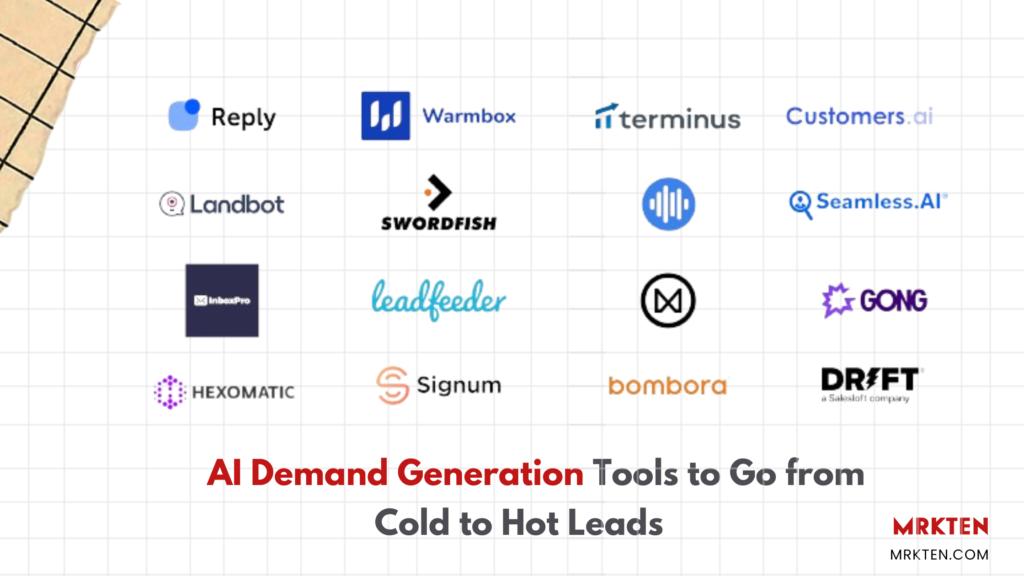
Swordfish.ai
- What it Does: Swordfish.ai provides real-time sales coaching through AI-powered conversation analysis. It offers feedback on call performance and suggests talking points for improvement.
- Best For: Elevating the communication skills of sales teams by providing real-time coaching and actionable insights during calls.
Salesforce Einstein
- What it Does: Analyze data to identify sales-ready leads and predict customer behavior.
- Best For: Prioritizing leads and streamlining sales processes.
Marketo Engage
- What it Does: Automate personalized email campaigns and score leads based on engagement.
- Best For: Keeping leads engaged and maximizing conversion rates.
HubSpot
- What it Does: An all-in-one suite for lead generation, nurturing, and analytics.
- Best For: Streamlining your entire B2B marketing strategy.
Demandbase
- What it Does: Champion for Account-Based Marketing (ABM), helps target specific accounts and drive high-quality leads.
- Best for: Targeting specific accounts and driving high-quality leads.
Leadfeeder
- What it Does: Reveals which companies are visiting your site and identifies potential leads.
- Best For: Uncovering hidden opportunities and qualifying website visitors.
Terminus
- What it Does: Uses AI to identify companies actively researching your products or services.
- Best For: Targeting leads at the perfect moment in their buying journey.
Chorus.io
- What it Does: Analyzes sales calls and suggests personalized talking points for improved outreach.
- Best For: Elevating your sales team’s communication skills
Madgic.ai
- What it Does: Tracks user interactions across platforms and reveals the true drivers of conversions.
- Best For: Understanding what’s working in your marketing campaigns
Drift
- What it Does: Uses chatbots to engage website visitors and qualify leads in real-time.
- Best For: Capturing leads and initiating conversations.
Bombora
- What it Does: Identifies companies actively researching industry-specific topics, allowing for laser-focused targeting.
- Best For: Reaching prospects at the exact moment they’re most receptive.
Looker
- What it Does: Explore complex datasets, identify trends, and uncover new opportunities for lead generation.
- Best For: Gaining deeper insights from your B2B marketing data.
Customers.ai
- What it Does: Unifies customer data from various sources to create a single customer profile. This allows for better segmentation, personalization, and targeting of marketing and sales efforts.
- Best For: B2B companies looking to gain a unified view of their customers, segment, and personalize.
Seamless.ai
- What it Does: Uses AI to crawl the web and public databases to find verified contact information for decision-makers at target companies.
- Best For: Streamlining lead generation by identifying and connecting with high-value B2B prospects.
Gong.io
- What it Does: Analyzes sales calls, identifies areas for improvement, and suggests personalized coaching tips.
- Best For: Improving sales communication skills, understanding next best step and closing more deals
Remember, this is not an exhaustive list, and the best tool for you will depend on your specific process, budget, and market. It’s recommended to research each tool further to see if it aligns with your goals.
What to Look for in AI-Powered Demand Gen Tools
Functionalities and strengths can greatly vary across AI-powered tools for content creation. Use the list below to prioritize whats important for your own team. Feeling lost in the B2B lead jungle? Imagine having a team of AI assistants by your side, slashing through obstacles and guiding you to high-value prospects. Look no further! Here are the top 10 features these AI tools offer to transform your B2B demand generation and qualification:
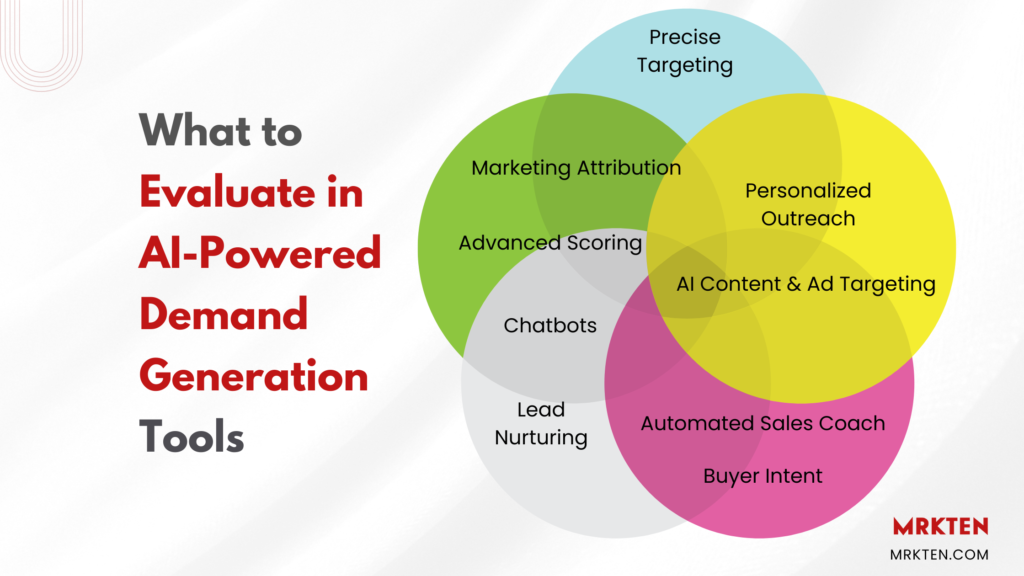
- Precise Targeting: AI support to analyze vast amounts of data to identify ideal customer profiles and reveal warm leads.
- Personalized Outreach: The ability to personalize email campaigns and messaging at scale based on lead behavior and demographics.
- Advanced Scoring: Support for AI-driven lead scoring to prioritize high-potential prospects, and automate tasks.
- Chatbots: Reveal which companies are visiting your site and allow you to engage them in real-time with chatbots.
- Marketing Attribution: The ability to accurately track user interactions across all channels and uncover the true drivers of conversions to optimize spend.
- AI Content & Ad Targeting: Does it leverage AI to personalize website content and target ideal customers with relevant ads based on buying intent.
- Automated Sales Coach: The ability to analyze sales calls, identify areas for improvement, and suggest personalized talking points for more impactful outreach.
- Lead Nurturing: AI to automate personalized email nurturing campaigns and score leads based on their engagement level.
- Buyer Intent: Use of AI to identify companies actively researching your products or services, allowing you to target them when they’re most receptive.
By harnessing the power of AI with these features, you can transform your B2B demand generation and qualification efforts, navigating the B2B lead jungle with confidence and turning website visitors into loyal customers.
14 Best Practices for AI Demand Generation
While AI-powered tools offer immense potential, a thoughtful approach will maximize their effectiveness. Here are several guidelines and best practices:
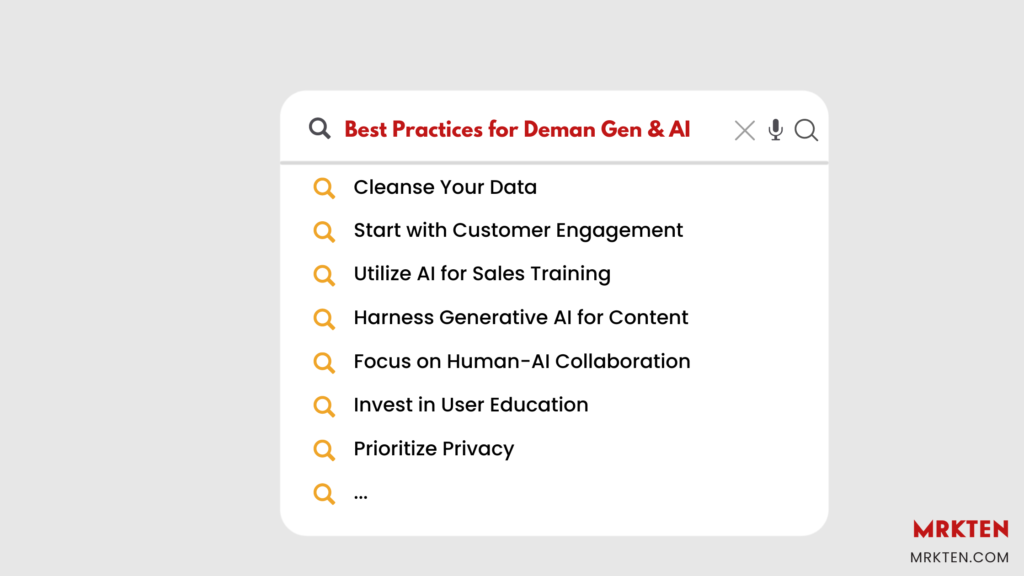
- Define Your Ideal Customer Profile: AI thrives on clear direction. Before deploying AI tools carefully define your ideal customer profile. This includes demographics, firmographics, buying behaviors, and other data. A well-defined ICP allows AI to target the right companies and individuals.
- Cleanse Your Data: “Garbage in, garbage out” applies to AI as well. Ensure your CRM system and marketing automation platforms have accurate and up-to-date data. Clean data enables AI tools to generate more accurate insights and leads.
- Set Goals: Set clear goals to effectively track the impact and performance AI and measure their impact on lead generation and qualification.
- Start with Customer Engagement and Retention: Explore using AI for sentiment analysis and to develop strategies for retaining at-risk customers. AI-driven recommendations can also assist in upselling or cross-selling.
- Utilize AI for Sales Training: Incorporate AI platforms for personalized sales training and feedback. These tools can simulate various sales scenarios, offering targeted coaching to improve sales team performance.
- Harness Generative AI for Content: Explore using generative AI tools to quickly generate drafts or design prototypes, allowing teams to focus on strategic and creative work rather than manual processes. This facilitates exploring more concepts and customizing content across campaigns.
- Invest in AI-powered Tools for Operational Efficiency: Embrace tools like AI chatbots for 24/7 customer interaction and AI email assistants for account nurturing. These automate repetitive tasks, enhance customer satisfaction, and free up human resources for strategic work.
- Focus on Human-AI Collaboration: AI is a powerful tool, but it’s not a replacement for human expertise. Leverage AI for data analysis, lead scoring, and personalization, but retain human oversight for strategic decision-making and creative content development.
- Continually Refine Your Strategy: The B2B landscape is dynamic. Monitor your AI tool performance regularly, analyze results, and adjust your strategies as needed. This ensures your AI tools stay aligned with your evolving business goals and market conditions.
- Invest in User Education: Embrace the power of knowledge. Educate your marketing and sales teams on how to effectively utilize AI-driven tools for lead generation and qualification. This empowers them to leverage the full potential of AI.
- Prioritize Privacy: Transparency builds trust. Ensure your AI tools comply with data privacy regulations and that your data collection practices are transparent to potential leads. Building trust fosters stronger relationships with potential customers.
- Track & Analyze Lead Behavior: Understanding fuels success. Integrate your AI tools with marketing automation platforms and CRM systems to track user behavior across touchpoints. Analyze this data to identify patterns and personalize outreach for improved conversion rates.
- Test and Experiment: Innovation thrives on exploration. Don’t be afraid to experiment with different AI tool features and settings. A/B testing allows you to identify the most effective strategies for your specific audience and goals.
- Embrace Continuous Learning: Stay ahead of the curve. The AI landscape is constantly evolving. Actively seek out new knowledge and best
Limitations: A Powerful Ally, But Use it Wisely
Understanding the limitations of AI is as important as understanding the opportunity. Here’s a look at the potential pitfalls to consider alongside its benefits:
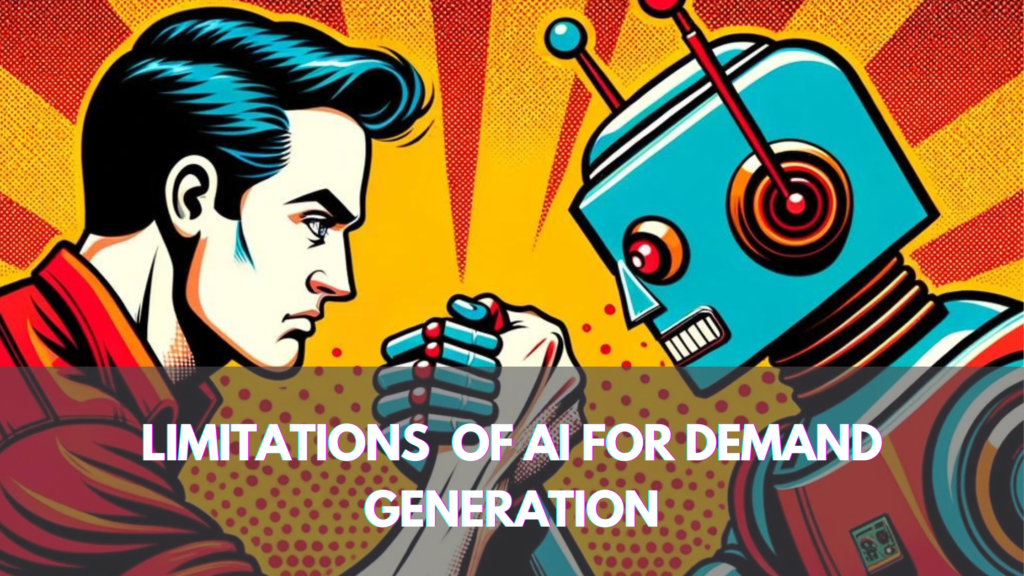
- Data Privacy vs. Personalization: Stringent data privacy laws like GDPR restrict the free flow of user information, limiting AI’s ability to personalize at full capacity.
- Data Security Concerns: AI tools rely on vast amounts of data, so robust security protocols are crucial to protect sensitive customer information. Don’t let your B2B lead list become the next data breach.
- Dependency on Data Quality: AI is only as good as the data it’s trained on. Poor data quality can lead to misguided strategies, wasted resources, and missed opportunities. Also remember if your data is messy, expect inaccurate insights and poorly targeted leads.
- Integration Challenges: Integrating AI tools with existing marketing automation platforms and CRM systems can be complex. Ensure your tech stack is compatible to avoid data silos and ensure smooth operation.
- Limited Creativity: AI excels at data analysis and automation, but struggles varies widely with creative tasks like crafting compelling marketing copy. Don’t expect AI to write the next blockbuster blog post.
- Being On-Brand: While AI can generate content, there’s a gap in its ability to truly innovate or understand brand essence, making some AI-generated content feel soulless or off-brand.
- Explainability Challenge: Sometimes, AI makes decisions that can seem like a black box. Understanding the “why” behind its recommendations can be tricky.
- Human Bias Creep: AI algorithms are trained on data sets created by humans. If those data sets contain biases, the AI can perpetuate them.
- Over-reliance on Automation: Automation is great, but it shouldn’t replace human interaction. Leads still appreciate a personalized touch.
- Evolving Buyer Behaviors: AI algorithms need to be continuously updated to keep pace with evolving buyer behaviors and market trends.
- Cost Considerations: While some AI tools offer free trials or basic packages, implementing AI enabled solutions often comes with a hefty price tag. Be clear on your budget and ROI expectations.
- Accuracy of Predictions: AI’s predictive prowess isn’t foolproof. Always check results and content.
- Ethical Considerations: Using AI responsibly is key. Be transparent about how AI is used in your lead generation efforts and prioritize user privacy.
- Overreliance on Quantitative Data: AI loves numbers, but qualitative insights—like emotional triggers—often get lost. This can lead to strategies that overlook the nuances of human decision-making.
By acknowledging these limitations, you can leverage AI tools effectively for demand generation and campaigns while keeping a watchful eye on their potential pitfalls. Remember, t’s up to you to wield it wisely.
The Thrilling Future of Demand Gen: Predictions & Trends for AI
B2B marketing is on a collision course with AI, and the future of demand generation is seriously exciting. Here’s what we’re anticipating for AI to continue to transforming your marketing game.
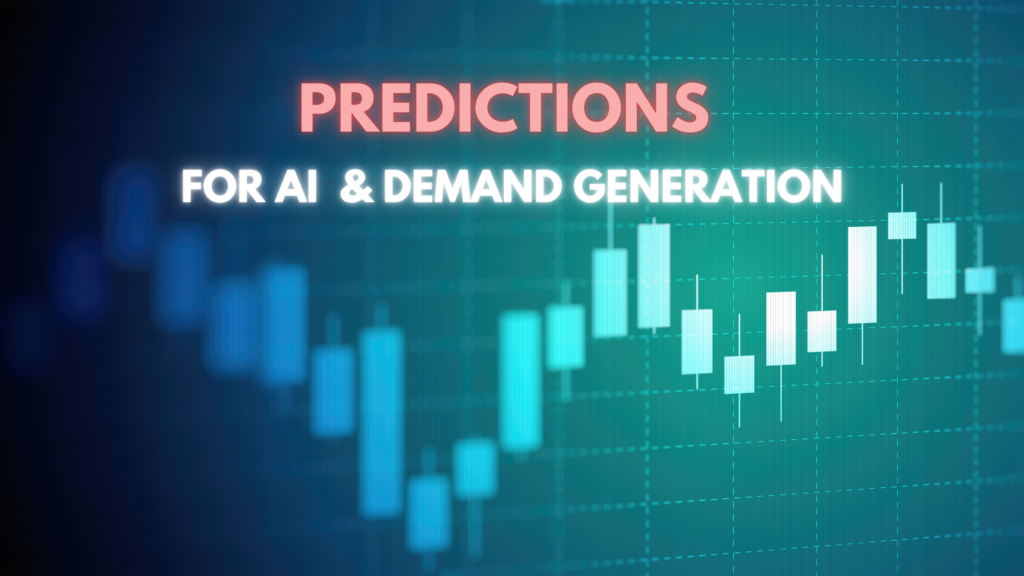
- Automation of Hyper- Personalization: AI will drive deeper personalization across all touchpoints. AI will analyze individual behavior, preferences, and buying stage and use predictive analytics to tailor outreach and content with laser precision. Get ready for interactions that feel eerily bespoke.
- AI-powered Content Creation: Writer’s block will be a relic of the past. AI will assist in crafting compelling marketing copy, ads, and personalized video content at scale. Marketers will produce more varied and targeted content at scale, with a human touch for the final polish.
- Enhanced Predictive Lead Scoring: Expect AI to get even better at predicting which leads are most likely to convert, using advanced models that consider a broader array of signals. AI won’t just score leads, it will predict their future behavior. Imagine knowing the exact moment a lead is most likely to convert.
- The Era of Conversational AI: Get ready for chatbots that sound and act human. AI-powered chatbots will engage website visitors in natural conversations, qualify leads, and schedule sales demos. Expect chatbots to become more sophisticated, offering more personalized and contextually relevant interactions. The line between human and machine interaction will continue to blur.
- The Power of AI in Account-Based Marketing: AI will supercharge ABM efforts. Get ready for highly targeted ABM campaigns that yield exceptional results.
- The Rise of Explainable AI: The “black box” problem will fade. AI will become more transparent, explaining the reasoning behind its recommendations. This will foster trust and allow marketers to make more informed decisions.
- Ethical AI and Privacy Focus: With growing concerns around data privacy and AI ethics, expect a surge in tools that prioritize user consent and transparency, aligning with global data protection regulations.
- The Democratization of AI: AI tools won’t just be for B2B giants. Affordable and user-friendly AI solutions will become readily available, empowering even small and medium-sized businesses to leverage the power of AI.
- The Rise of Ethical AI Practices: Data privacy and responsible AI use will become a top priority. B2B companies will be held accountable for using AI ethically and transparently. Building trust with potential customers through responsible AI practices will be paramount.
- The Human-AI Partnership Flourishes: The future belongs to collaboration. AI will augment human strengths, freeing marketers to focus on strategy, creativity, and building meaningful relationships with leads.
Use these predictions and trends as a map to plan and position your marketing at the forefront.
Key Takeaways AI-Driven Demand Generation
AI’s impact on demand gen is unfolding rapidly. The trajectory is set towards creating more personalized, efficient, and engaging experiences. However, the blend of human creativity with AI’s analytical power remains to craft strategies that resonate deeply with your target audience. As we move forward, staying abreast of these trends and adapting strategies accordingly will be key to leveraging AI’s full potential.

- Know AI’s potential and limits: Let AI become a part of your content workflow to but keep in mind AI is constantly evolving.
- Use best practices: Be crystal-clear about your goals, keep your data clean, and have an experimental mind set.
- A prompt universe: Prompts can support the range of demand generation activities but use them as your campaign assistant not intern.
- Know and use the right tool: Learn, try and use the variety of AI-powered demand generation tools.
Always be learning! See the resources below to help you be your best!
⚡ Take Action, Next Steps
Join
Join our free expert newsletter for frequent tips, tools, prompts, and examples for marketers to do more with AI.
Try
Try an AI Masters Courses built by pro’s based on real world examples. Bite-sized engaging lessons to future proof marketing.
Access
Read another guide about AI for B2B Digital Marketing.
